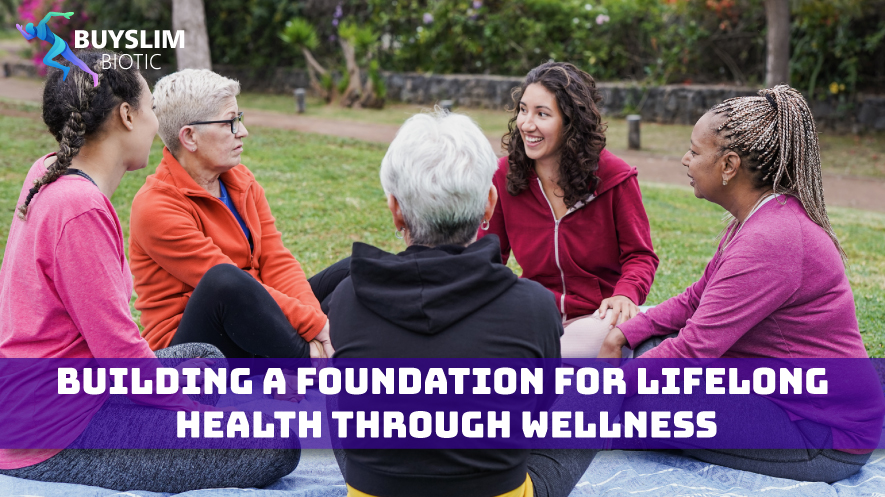Unlock the secrets to staying fit after 50 with our expert tips and personalized fitness plans. Embrace a healthier, more active lifestyle regardless of age. Get inspired and transform your health journey today.
Getting fit and healthy can be challenging at any age. However, it’s never too late to start.
Regular exercise reduces the risk of heart disease, lowers blood pressure and strengthens bones. It also makes everyday tasks like walking or climbing stairs easier.
Incorporating a mix of cardiovascular and strength training exercises is recommended.
Strength and Flexibility
At age 50, it becomes more difficult to maintain muscle mass because the body’s ability to synthesize protein diminishes. But that doesn’t mean it is impossible, and a fitness program that includes both resistance training and regular stretching can help to minimize bone loss and improve balance and flexibility.
A good starting point is to consult with your physician before beginning any new exercise program. Once your doctor approves, it is important to begin slowly and gradually increase the duration and intensity of your workouts. It is also important to incorporate warm-up exercises and stretching before each exercise session to prevent injuries, which are common for older adults.
It’s important to find an exercise routine that you enjoy. Having fun with your workouts can keep you motivated and engaged, which will help you stick with your routine over time. It’s also helpful to find a community of other senior athletes who can offer support, encouragement and accountability. This can be done through a local sports club, exercise class or recreational team.
In addition to physical activity, it’s also important to maintain healthy eating habits. Incorporating whole grains, lean proteins and fruits and vegetables into your diet can help reduce the risk of heart disease and other chronic conditions. Additionally, limiting sugary foods and drinks can improve energy levels and focus, especially in older adults.

Cardiovascular Health
The cardiovascular system is one of the bodies’ most critical systems. A regular exercise routine, coupled with a balanced diet, can help reduce the risk of heart disease and keep your body healthy as you age.
While your 40s may have been consumed with work, childrearing and a host of other responsibilities, it’s never too late to start improving your heart health by exercising regularly. A nutritious diet can also make a big difference, and you should try to consume less salt by cutting back on processed foods and choosing fresh fruits and vegetables instead.
In addition to aerobic activity, it’s important to incorporate a variety of strength training exercises into your workout regimen. These exercises can prevent muscle atrophy and increase bone density, reducing your risk of fractures later in life. Balance and core strength are also important, and exercises like tai chi and Pilates can help with these issues.
Aim for 30 minutes of cardio exercise, such as walking or jogging, five days a week, and include two or three strength-training workouts in your weekly routine. Remember to always warm up and stretch before and after your workouts to avoid injury. In addition, be sure to see your doctor before starting an exercise program if you have medical conditions or risk factors for heart disease. A physician can recommend appropriate exercise intensity levels and suggest safe and effective stretches to improve flexibility. They can also help you create an individualized fitness plan, including a heart-healthy diet, to minimize your health risks. This will help you stay fit and enjoy a high quality of life for longer.
Mental Health
As you age, your body experiences a number of physical changes that can alter how you move and feel. This is why it’s important to practice healthy lifestyle habits throughout the year, including regular exercise and a balanced diet.
Maintaining a strong and healthy body as you get older requires a well-rounded fitness routine that incorporates strength training, cardiovascular activity, balance exercises, and stretching. Incorporating these workouts into your daily schedule will help you build muscles and reduce aches and pains from everyday activities like lifting groceries or bending over to pick up something off the floor.
Additionally, exercise has been shown to increase the blood flow to the brain and promote the formation of new cells and connections. This can help improve mental health and memory.
In addition to maintaining a well-rounded exercise routine, practicing mindful eating can help you enjoy your food more and feel better about what you’re putting into your body. Mindful eating involves paying attention to the taste, texture, and smell of your food, which can help you eat less and prevent overeating.
Incorporating a healthy diet into your daily life is also crucial for improving your mental health. Eating a balanced diet filled with fruits, vegetables, and proteins can help keep you full and energized throughout the day. It’s also important to avoid foods high in fat, sugar, and sodium, which can lead to weight gain and a higher risk of heart disease. Lastly, incorporating stress-reduction practices into your daily routine can help you stay mentally healthy and happy as you age. For example, meditation, deep breathing exercises, and yoga are all great ways to relax your body and mind.
Bone Health
It’s no secret that regular exercise is beneficial for all ages, but as we age it becomes increasingly important to stay fit. One of the biggest reasons is that exercise can help improve bone health, as it helps maintain and build muscle mass that protects against the loss of bone density that happens with age.
This is especially true for women, who experience a sharp decline in bone density after menopause, which can lead to fractures. These fractures, particularly in the hip and spine, can have serious consequences for older adults, such as reduced mobility and decreased independence. By staying fit and following a diet rich in calcium, vitamin D and magnesium, which are all found in most multivitamins, people over 50 can minimize their risk of osteoporosis.
The recommended level of cardio or aerobic activity for people over 50 is 150 minutes per week. It can include walking, swimming, yoga, jogging or even yard work, as long as it gets your heart rate up and increases your breathing. It is also a good idea to add in some strength or resistance training and flexibility exercises, which can help improve balance and reduce the risk of falls.
As with any fitness routine, it’s best to start slow and work your way up gradually. It is also a good idea to talk to your doctor before starting a new exercise regimen, particularly if you haven’t been active for a while. They will be able to help you create an appropriate and safe workout for your age and fitness level. Additionally, it is a good idea to take supplements that are specifically recommended for older adults, such as calcium, vitamin D and magnesium, which can help ensure that you’re getting all of the necessary nutrients to keep you healthy and strong.
Weight Management
When you’re in your 50s, it takes more effort to maintain or lose weight than when you were younger. A combination of regular exercise, proper nutrition and enough sleep can help keep you slim.
One of the reasons for that is because muscle mass decreases with age and you lose some bone density as well, affecting your metabolism and energy levels. Keeping your body fit with regular exercise and strength training helps prevent this decline, as does eating a diet low in salt.
Adding some aerobic exercise to your routine may also be helpful. National guidelines recommend 150 minutes of moderate aerobic activity per week. That may sound like a lot, but it can be as simple as walking, swimming or dancing. Even yard work or housecleaning can be considered aerobic activity if it gets your heart rate up.
As you get older, your muscles become infiltrated by fat cells, making it harder to burn calories. Eating a balanced diet and staying active with strength training and cardio can improve this condition, reducing your risk for high blood pressure, heart disease and diabetes.
Many people who start an exercise program after the age of 50 are concerned about getting injured. It’s important to speak with a physician before beginning a new workout and to follow a routine that allows you to gradually increase your activity level over time. In addition, always perform a thorough warm-up and stretch to prepare muscles and joints for exercise. This includes a five- to 10-minute routine of dynamic stretches and foam rolling for tight areas, as well as stretching after each workout. Finally, it’s a good idea to schedule regular routine screenings, such as mammograms and colonoscopies, to help identify potential problems early and minimize the impact of diseases or injuries.





